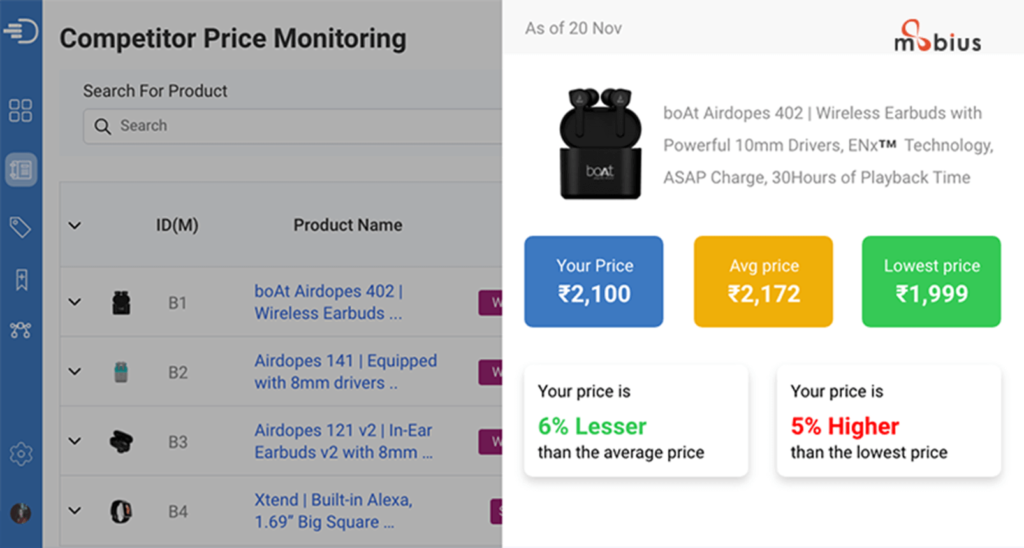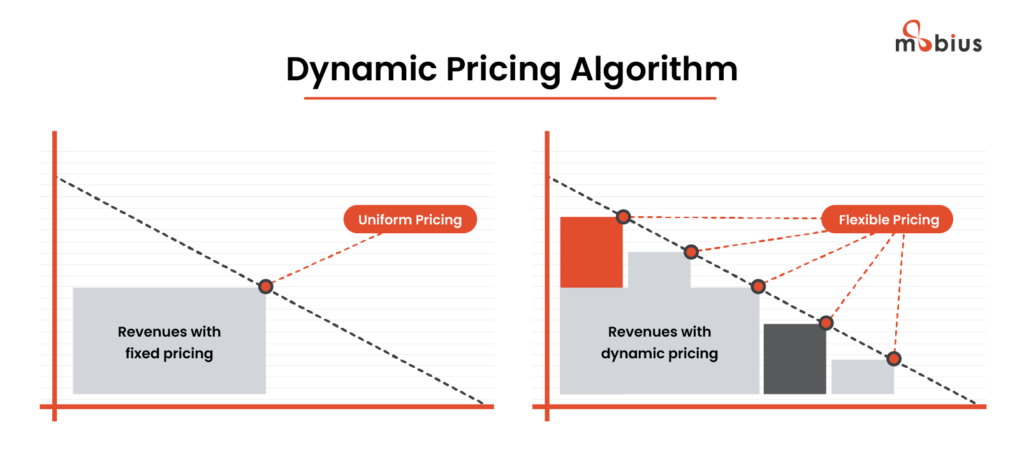Price wars are one of the common challenges in an evolving industry like ecommerce. It results from countless players fighting to stay competitive and win the market share. Brands often use the price drop strategy to attract more customers and win profits. Sounds like a great strategy, right? Well, here’s the kicker. Instead of helping incur more profits, such strategies seriously mess up the company’s profits.
While some companies respond to competitor price changes without data insights, successful businesses make data-backed pricing decisions. These critical insights are derived from regular competitor price monitoring efforts. Price monitoring tools track thousands of products every day to keep tabs on the competition and let businesses decide on the most profitable prices.
Likewise, your business can use many clever tactics to avoid the dangers of price wars and keep its profits safe and sound. In this blog, we will understand what is a price war and how it can be avoided to maintain ecommerce profits.
What is a price war?
A price war is a strategic response to a competitor’s price deductions. It occurs when two or more players engage in a relentless downward spiral of price slashing to gain a higher market share. Although it would seem like a calculated and quick solution, it often has a detrimental impact on profit margins and brand reputation.
How to avoid price wars and maintain a good profit margin?
1. Analyze Competitor Pricing Strategies
Conduct comprehensive assessments of your competitors’ pricing tactics to discern patterns and predict their actions. You can strategically position your products without succumbing to impulsive price adjustments by grasping their pricing dynamics.
Let’s consider the ecommerce giant Amazon. Amazon utilizes sophisticated algorithms and data analysis to monitor competitors’ pricing strategies in real-time. By continuously evaluating competitor prices, Amazon adjusts its own prices strategically to remain competitive while maximizing profits.
For instance, if a competitor drops prices on a particular product, Amazon may match or slightly undercut the price to maintain its market share. However, rather than engaging in a price war, Amazon focuses on providing additional value through its Prime membership program, fast shipping options, and extensive product selection to retain customers and sustain profitability.

You can position yourself as a leader in the ecommerce industry through meticulous competitor analysis and strategic pricing decisions without resorting to reactive price reductions.
2. Communicate Your Strategy Effectively
Openly sharing your pricing strategy can discourage competitors from sparking price wars. Highlighting the value your products offer and maintaining consistent prices fosters trust among customers and competitors.
Consider the online retailer Warby Parker, known for its transparent pricing strategy. Warby Parker publicly communicates its commitment to offering high-quality eyewear at affordable prices by bypassing traditional retail markups. The brand emphasizes its social mission and ethical practices through its “Buy a Pair, Give a Pair” program, resonating with customers who prioritize value and social responsibility.

By openly communicating its pricing philosophy and value proposition, it establishes credibility and trust with customers and competitors, reducing the likelihood of price-based competition. This transparent approach fostered customer loyalty and reinforced Warby Parker’s position as a market leader in the eyewear industry.
3. Assess Customer Price Sensitivity
Conducting thorough market research within the ecommerce and retail sector to understand the price sensitivity of your target audience is necessary. By gaining insights into their willingness to pay, you can tailor your pricing strategies to meet their expectations while ensuring healthy profit margins.
Amazon continuously evaluates its customers’ price sensitivity through comprehensive data insights and market research. They track customer behavior, preferences, and purchasing patterns to understand their willingness to pay for various products.
For example, Amazon’s dynamic pricing strategy is evident in its personalized pricing, which adjusts prices based on a customer’s browsing history, purchase history, location, and even device. This allows Amazon to offer personalized prices to individuals, growing revenue while staying competitive.

Furthermore, Amazon frequently offers discounts and promotions on popular products to attract price-sensitive customers. It also leverages the Prime membership program to provide added value and incentivize loyalty among its customer base.
4. Implement Dynamic Pricing
Rather than reacting hastily to your competitor’s sudden price drops and losing profits, leverage dynamic pricing to adjust prices in real time. Dynamic pricing instantly adjusts product prices based on critical factors such as competitor pricing, demand, customer behavior, and inventory levels.
One of the biggest global retailers, Walmart utilizes dynamic pricing to stay competitive. The well-known brand adjusts prices in real-time. For instance, during clearance sales or seasonal promotions, Walmart may dynamically reduce prices on certain products to attract more customers and increase foot traffic in stores and online. Additionally, their Savings Catcher program automatically compares prices from competitors and refunds the difference if a lower price is found, ensuring customers always receive the best deal available.

Moreover, Walmart leverages dynamic pricing to optimize its online marketplace. The company constantly monitors supply and demand dynamics, adjusting prices to reflect fluctuations in market conditions. For example, if a particular product experiences an increase in demand, Walmart may raise its price slightly to capitalize on growing interest and maximize revenue.
5. Strategically Align Capacity Management
Industry overcapacity can lead to price wars due to heightened competition and pressure to maintain market share. When an industry has excess production capacity, businesses often face the challenge of selling their surplus inventory.
Companies may resort to slashing prices in an attempt to offload excess goods and generate revenue, leading to a downward spiral of price reductions across the market. Therefore, managing your company’s capacity is crucial to avoid these detrimental price battles.

In the ecommerce realm, a prime illustration of capacity management is demonstrated by Zara, a global fashion retailer. Zara strategically controls its production capacity to align with market demand. By adopting a fast fashion model, Zara keeps its production lines agile and responsive, minimizing the risk of over-capacity. This allows them to avoid excessive inventory buildup, reducing the pressure to engage in price wars to clear surplus stock.
Final thoughts
In today’s dynamic ecommerce landscape, maintaining profitability amidst fierce competition requires a multifaceted approach. By implementing a combination of strategic tactics, businesses can effectively navigate the challenges of industry overcapacity and the looming threat of price wars.
A powerful price monitoring tool will allow you to implement dynamic pricing strategies that drive your business without getting into price wars. Contact us to explore our tool and learn how it can help skyrocket your revenue.






